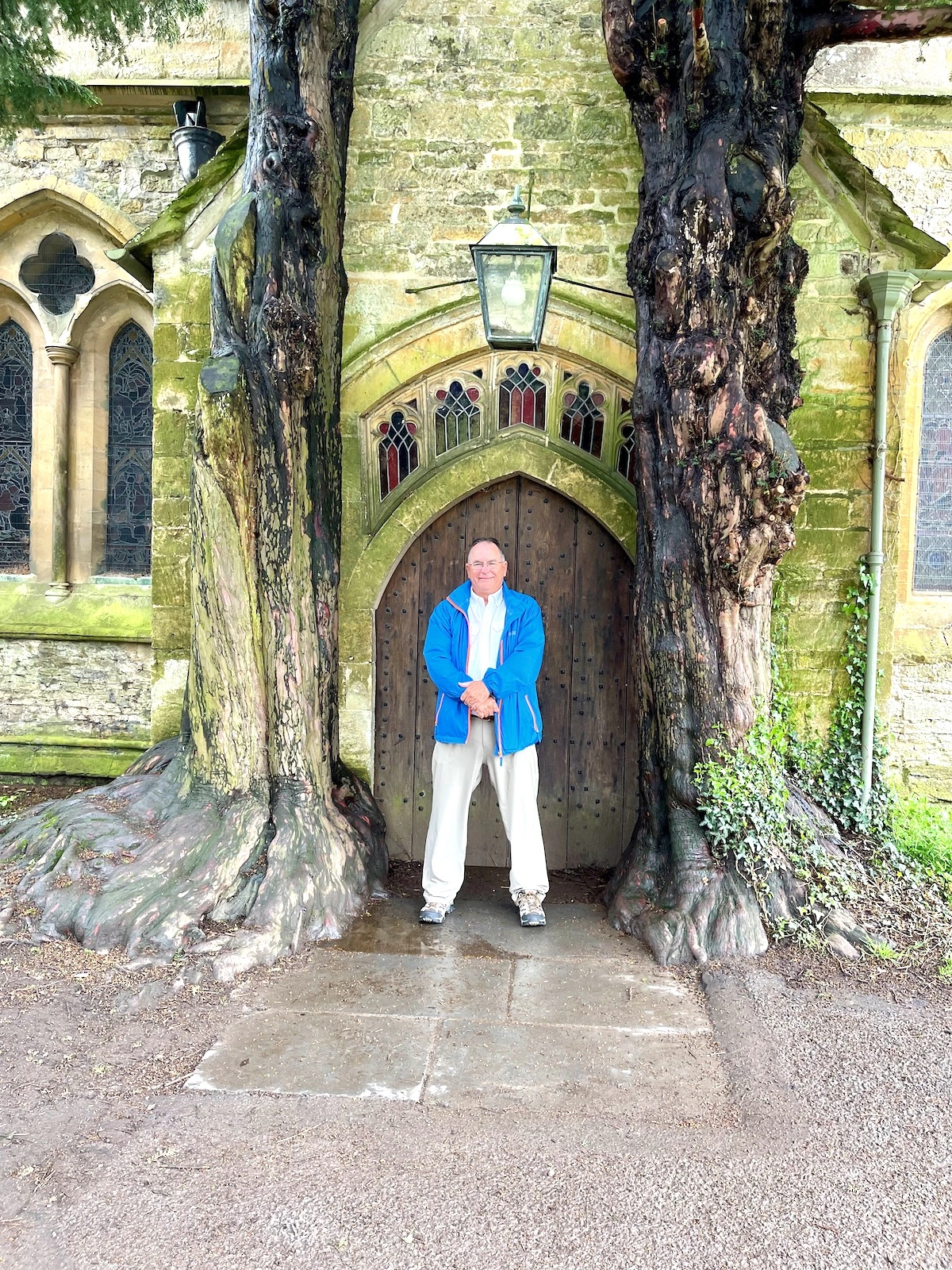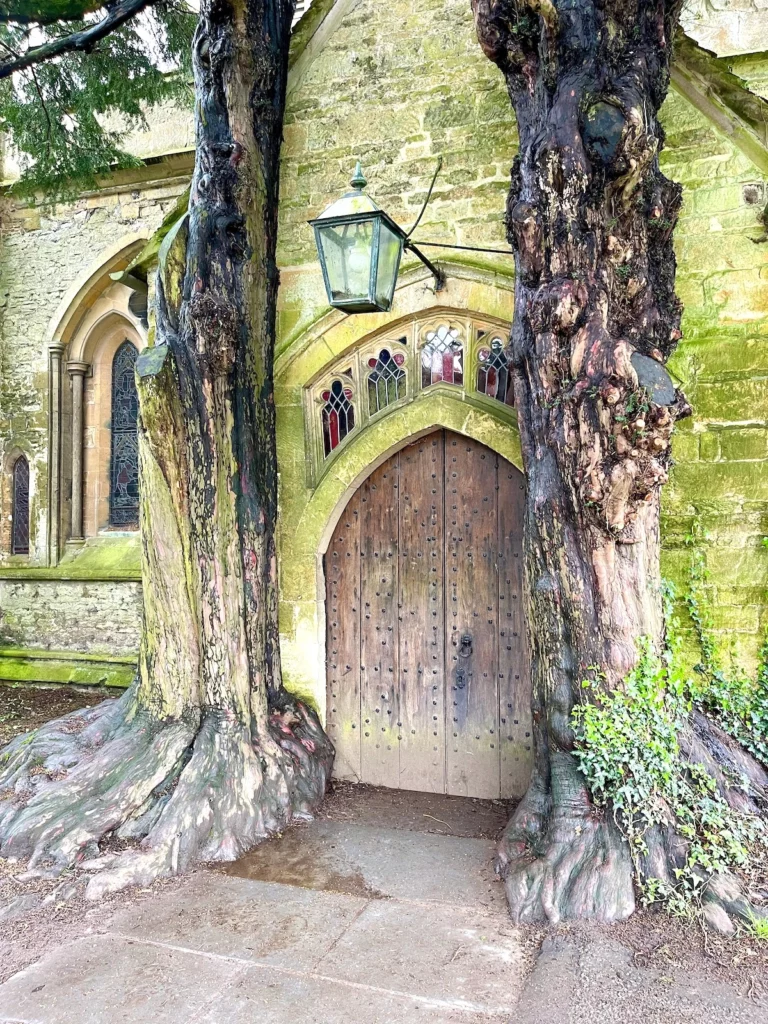The Doors of Durin: J.R.R. Tolkien’s Famous Inspiration
Faith, a powerful and profound aspect of human existence, has often served as a wellspring of inspiration for many artists, writers, and thinkers throughout history. One such luminary whose faith profoundly impacted his work was J.R.R. Tolkien, the renowned author of “The Lord of the Rings” and “The Hobbit.” Tolkien’s faith as a Roman Catholic played a significant role in shaping his writing and worldview. Interestingly, one of the lesser-known sources of inspiration for Tolkien’s masterpieces lies in the door of St. Edward’s Church in Stow-on-the-Wold, England.
St. Edward’s Church – A Historical Haven
Located in the idyllic Cotswold region, St. Edward’s Church stands as a testament to centuries of history and unwavering faith. Its architectural magnificence blends Norman, Early English, and Perpendicular styles, drawing visitors from all walks of life. The tranquil and scenic surroundings of Stow-in-the-Wold undoubtedly contributed to the ethereal atmosphere that captured Tolkien’s imagination. And the doors flanked by Yew trees is said to have been the inspiration of the Doors of Durin.

The Doors of the Durin – A Portal to Reflection
Throughout history, doors have held a powerful symbolism in various cultures, representing passages, transitions, and opportunities. In J.R.R. Tolkien’s “The Lord of the Rings,” the Doors of Durin serve as a significant example of this symbolism, while in Christianity, Jesus Christ is often referred to as the “door.” After our trip to this church, a desire was ignited in me to explore the similarities and differences between the Doors of Durin and the concept of Christ as the Door, delving into the rich symbolism and meanings they carry.

In Tolkien’s masterpiece, the Doors of Durin are a massive, ornately carved entrance that guards the entrance to the Mines of Moria. Crafted by the Dwarven Lord Celebrimbor and inscribed with the Elvish phrase, “Speak, friend, and enter,” these doors are designed to appear indestructible and impenetrable. However, the true key to opening them lies not in force, but in understanding the riddle hidden within the inscription. The doors’ purpose is to challenge the visitor’s intellect and connection to the past, reflecting the Dwarves’ appreciation for the clever and resourceful.
Christ as the Door:
In Christianity, Jesus Christ is often referred to as the “door” or the “gate.” This metaphor is drawn from the teachings of Jesus himself, where he states, “I am the door; if anyone enters through Me, he will be saved” (John 10:9). This analogy highlights the idea that salvation and access to a meaningful relationship with God can only be achieved through a personal connection with Christ. He is the entryway to spiritual enlightenment, forgiveness, and eternal life.
Symbolic Comparisons:

- Access and Salvation: The Doors of Durin grant access to the hidden treasures and history of the Mines of Moria. Similarly, Christ as the Door provides access to the abundant life and spiritual salvation. Just as the Doors of Durin challenge visitors to find the correct way to open them, Christ’s message challenges individuals to seek Him earnestly for salvation. He also offers that if you knock, it shall be opened. (Matthew 7:7)
- Intellect vs. Faith: The Doors of Durin test the visitor’s intellect and understanding of the Elvish language, requiring mental effort to enter. On the other hand, Christ as the Door invites individuals to approach with faith and humility, emphasizing the importance of a heart-oriented connection rather than mere intellectual prowess.
- Physical vs. Spiritual: The Doors of Durin are physical, tangible barriers that lead to hidden riches. Christ as the Door represents a spiritual gateway to divine truth, transformation, and ultimate fulfillment beyond the material world.

The Doors of Durin and the concept of Christ as the Door both hold profound symbolism that transcends their fictional and religious contexts. These metaphors remind us that doors represent more than just physical barriers; they represent opportunities for growth, transformation, and deeper understanding. Just as the Doors of Durin challenge visitors to decipher the riddle and approach with the right intention, so too does the metaphor of Christ as the Door encourage us to approach with faith, humility, and a desire for a meaningful connection that leads to spiritual enlightenment and salvation.

